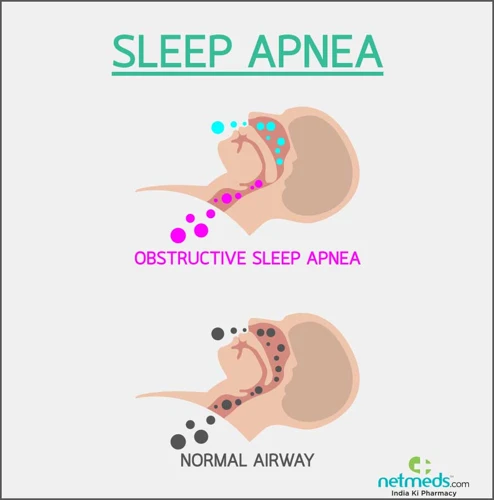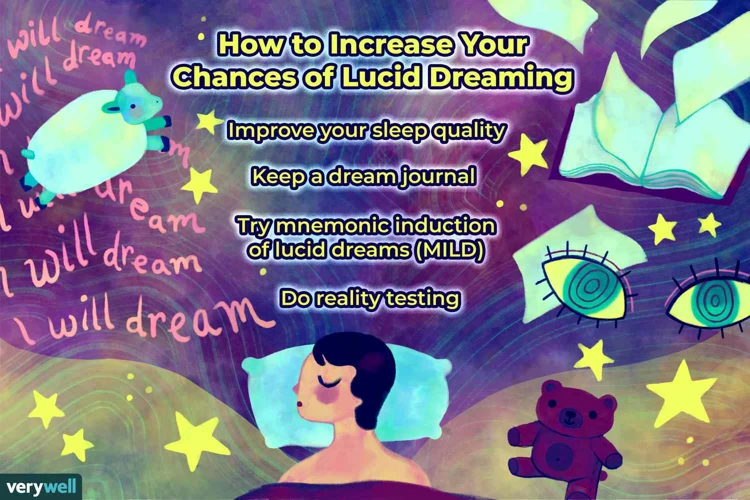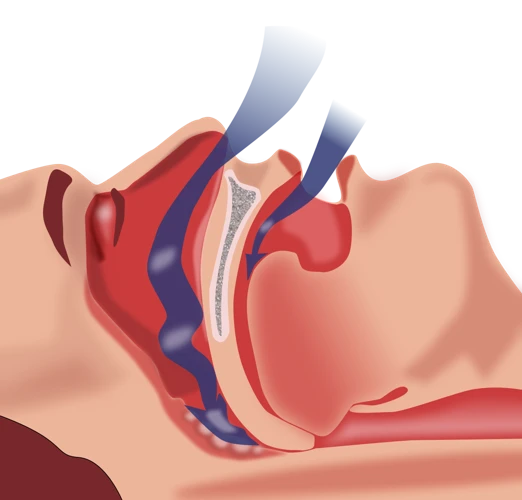Many people are familiar with the struggles of sleep apnea, a condition characterized by interrupted breathing during sleep. What many may not realize is that sleep apnea can also have an impact on a person’s dreams. On the other hand, there is a fascinating phenomenon known as lucid dreaming, where individuals become aware that they are dreaming and can manipulate the dream experience. So, what is the connection between sleep apnea and lucid dreaming? In this article, we will delve into the fascinating world of these two topics, exploring the science behind sleep apnea and lucid dreaming, the potential relationship between them, and how sleep apnea sufferers can enhance their lucid dreaming experiences. Join us on this exploration of the connection between sleep apnea and lucid dreaming.
What is Sleep Apnea?

Sleep apnea is a sleep disorder characterized by pauses in breathing or shallow breaths while sleeping. These pauses, known as apneas, can occur multiple times throughout the night and can last for several seconds or even minutes. This interruption in breathing can lead to a decrease in the body’s oxygen levels and cause a person to wake up momentarily, often without realizing it. There are three main types of sleep apnea: obstructive sleep apnea (OSA), central sleep apnea (CSA), and complex sleep apnea syndrome (CSAS). OSA is the most common type and occurs when the airway becomes partially or completely blocked during sleep, leading to breathing difficulties. CSA, on the other hand, is caused by a failure of the brain to transmit proper signals to the muscles that control breathing. CSAS is a combination of both OSA and CSA. Sleep apnea can have significant impacts on a person’s overall health and well-being. It is often associated with symptoms such as loud snoring, excessive daytime sleepiness, morning headaches, and difficulty concentrating. Sleep apnea has been linked to a range of health conditions, including hypertension, heart disease, stroke, and diabetes. Addressing sleep apnea is crucial not only for improving sleep quality but also for enhancing overall health and reducing the risk of associated health problems. Understanding the connection between sleep apnea and dreams can provide valuable insights into how this sleep disorder affects individuals during their sleep cycles. For more information on the impact of sleep apnea on dreams, please check our article on types of sleep apnea and dreams.
What is Lucid Dreaming?

Lucid dreaming is a captivating phenomenon where individuals become aware that they are dreaming while still in the midst of the dream. This state of consciousness allows dreamers to actively participate and manipulate the dream experience. In a lucid dream, individuals can have a sense of control, making decisions and influencing the dream’s narrative and outcomes. They may choose to fly, explore fantastical landscapes, or interact with dream characters. The experience of lucid dreaming can be incredibly vivid and immersive, often characterized by heightened sensations and emotions. Lucid dreams can occur spontaneously, but some people actively practice techniques to induce lucid dreaming. These techniques may include reality checks, where individuals habitually question their waking state to establish awareness, or keeping dream journals to enhance dream recall. Lucid dreaming is a subject of great interest and has been studied extensively by researchers to understand its potential benefits and applications. To learn more about dream recall, check out our article on sleep apnea and dream recall. For tips on improving clarity in dreams, visit our article on tips for sleep apnea dream clarity.
The Science Behind Sleep Apnea

Sleep apnea is a complex sleep disorder that involves several physiological processes. Let’s explore the science behind sleep apnea:
1. Airway obstruction: In obstructive sleep apnea (OSA), the most common type of sleep apnea, the airway becomes partially or completely blocked during sleep. This obstruction can occur due to relaxation of the muscles in the throat, tongue, and soft palate, leading to the narrowing or closure of the airway. This blockage restricts the flow of air, resulting in pauses in breathing.
2. Brain signaling: Central sleep apnea (CSA) occurs when the brain fails to send appropriate signals to the muscles responsible for controlling breathing. This interruption in signaling can lead to a lack of respiratory effort, causing pauses in breathing.
3. Oxygen deprivation: During sleep apnea episodes, the lack of oxygen triggers the body’s protective response, leading to brief awakenings or arousals. These awakenings are usually so brief that individuals may not even be aware of them. However, they disrupt the normal sleep cycle and prevent a person from achieving restful and restorative sleep.
4. Sleep disruptions: The interruptions in breathing and subsequent awakenings can occur multiple times throughout the night. As a result, sleep apnea disrupts the sleep architecture, including the crucial stages of deep sleep and REM sleep. This disruption can lead to fragmented sleep, reduced sleep quality, and excessive daytime sleepiness.
5. Health consequences: Sleep apnea can have numerous adverse health effects. The repeated drops in blood oxygen levels and constant sleep disruptions place excessive stress on the cardiovascular system. This can contribute to the development of hypertension, irregular heart rhythms, and an increased risk of heart disease and stroke. Sleep apnea has also been associated with metabolic disorders, such as insulin resistance and diabetes.
Understanding the underlying physiological mechanisms of sleep apnea is essential for diagnosis and treatment. Medical interventions, such as continuous positive airway pressure (CPAP) therapy, oral appliances, and lifestyle modifications, aim to address the specific factors contributing to sleep apnea and improve the quality of sleep and overall health.
The Science Behind Lucid Dreaming

Lucid dreaming is a captivating phenomenon that occurs when a person becomes aware that they are dreaming while still in the dream state. It is a unique and immersive experience that allows individuals to have a sense of control and agency within their dreams. The science behind lucid dreaming is still not fully understood, but researchers have made significant progress in uncovering some of its mechanisms.
1. REM Sleep: Lucid dreaming primarily occurs during REM (rapid eye movement) sleep, which is a stage of sleep characterized by heightened brain activity and vivid dreaming. During REM sleep, the brain becomes highly active, similar to when a person is awake, while the body remains in a state of muscle paralysis to prevent the dreamer from acting out their dreams.
2. Prefrontal Cortex Activation: Studies using electroencephalography (EEG) have shown that the prefrontal cortex, the part of the brain responsible for decision-making and self-awareness, becomes more active during lucid dreaming. This increased activity is believed to be responsible for the heightened self-awareness and the ability to exert control over the dream environment.
3. Neurochemical Factors: The neurotransmitter acetylcholine is believed to play a significant role in the occurrence of lucid dreaming. The release of acetylcholine during REM sleep is associated with increased brain arousal and vivid dreaming. Some studies suggest that higher levels of acetylcholine may contribute to the likelihood of experiencing lucid dreams.
4. Dreaming Awareness: Lucid dreaming is often triggered by a sudden realization that the current experience is a dream. This awareness can occur spontaneously or be induced through various techniques, such as reality testing (performing frequent checks to determine if one is in a dream) or mnemonic induction (repeating a phrase or mantra before sleep to enhance dream recall and self-awareness).
While more research is needed to fully comprehend the science behind lucid dreaming, these findings provide valuable insights into the neural processes and cognitive mechanisms behind this extraordinary phenomenon. Understanding the science behind lucid dreaming can help individuals learn techniques to enhance their lucid dream experiences and explore the vast possibilities of their dream worlds.
The Connection between Sleep Apnea and Lucid Dreaming

The relationship between sleep apnea and lucid dreaming is a complex one that has intrigued researchers and individuals alike. While there is not yet a definitive answer, there are several factors that suggest a potential connection. Firstly, the impact of sleep apnea on dream quality cannot be overlooked. Sleep fragmentation and interrupted breathing during sleep can disrupt the normal sleep cycle, affecting rapid eye movement (REM) sleep, which is the stage where most vivid dreaming occurs. This disruption may lead to a decrease in dream recall frequency in sleep apnea patients, as the fragmented sleep may inhibit the brain’s ability to retain and remember dreams. The use of techniques to induce lucid dreaming, such as reality checks or keeping dream journals, may be hindered by sleep apnea symptoms, further complicating the ability to experience lucid dreams. However, it is essential to note that while sleep apnea may present challenges, individuals with the condition can still explore techniques to enhance their lucid dreaming experiences. For valuable tips on how to enhance lucid dreaming for sleep apnea sufferers, please refer to our section on tips for sleep apnea dream clarity. Understanding and further research into the connection between sleep apnea and lucid dreaming can provide valuable insights into both the science of dreams and potential strategies for individuals with this sleep disorder to enhance their dream experiences.
1. Impact of Sleep Apnea on Dream Quality
The impact of sleep apnea on dream quality is a topic that has gained significant interest. Sleep apnea can disrupt the normal sleep cycle, causing frequent awakenings and fragmented sleep patterns. These interruptions in sleep can lead to a decrease in the overall duration of REM (rapid eye movement) sleep, which is the stage of sleep associated with vivid dreaming. As a result, individuals with sleep apnea may experience a reduction in the frequency and intensity of their dreams. Additionally, the intermittent drops in oxygen levels during apnea episodes can further impair dream quality. Oxygen deprivation can affect brain activity and reduce the brain’s ability to generate complex and memorable dreams. Studies have shown that individuals with sleep apnea tend to have fewer dreams and less dream recall compared to individuals without the condition. This suggests that sleep apnea may have a negative impact on dream formation and the overall dream experience. For more information on dream recall in sleep apnea patients, please refer to our article on sleep apnea and dream recall.
2. Dream Recall Frequency in Sleep Apnea Patients
Dream recall frequency refers to the ability of individuals to remember their dreams upon waking. In the case of sleep apnea patients, there is evidence to suggest that their dream recall frequency may be affected. Sleep apnea disrupts normal sleep patterns and can lead to fragmented sleep, as individuals may wake up briefly throughout the night due to breathing difficulties. This interrupted sleep can impact the brain’s ability to store and consolidate memories, including dreams. As a result, sleep apnea patients may have a lower dream recall frequency compared to individuals without sleep apnea. Additionally, the excessive daytime sleepiness associated with sleep apnea can also contribute to decreased dream recall, as sleepiness can make it more challenging for individuals to remember their dreams. However, it is important to note that the exact relationship between sleep apnea and dream recall is still being explored, and further research is needed to fully understand the impact of sleep apnea on dream recall frequency.
3. Lucid Dream Induction and Sleep Apnea
Lucid dreaming, the state of being aware that one is dreaming and having the ability to control and manipulate the dream, is a phenomena that has fascinated many individuals. However, for those who suffer from sleep apnea, the induction of lucid dreams may present unique challenges. The interrupted sleep patterns and frequent awakenings associated with sleep apnea can disrupt the natural sleep cycles necessary for lucid dreaming to occur. One method commonly used to induce lucid dreams is reality testing, where individuals question whether they are dreaming throughout the day and perform specific reality checks. However, sleep apnea sufferers may find it difficult to consistently perform reality checks due to daytime drowsiness and fatigue caused by the condition. Another popular technique for lucid dream induction is called mnemonic induction of lucid dreams (MILD), which involves setting an intention to have a lucid dream before falling asleep. Sadly, individuals with sleep apnea may struggle with maintaining a clear and focused mind during the transition from wakefulness to sleep, which can hinder the effectiveness of this technique. However, there is hope for sleep apnea sufferers who want to experience lucid dreaming. By addressing the underlying sleep apnea condition and improving sleep quality, individuals may be able to enhance their chances of having lucid dreams. Additionally, implementing relaxation techniques such as meditation and deep breathing exercises before sleep can promote a calm and focused mental state, facilitating the induction of lucid dreams. To learn more about tips for enhancing dream clarity for sleep apnea sufferers, please refer to our article on tips for sleep apnea and dream clarity.
How to Enhance Lucid Dreaming for Sleep Apnea Sufferers

Sleep apnea sufferers who are interested in enhancing their lucid dreaming experiences can take certain steps to increase their chances of having lucid dreams. One effective approach is to improve sleep hygiene, which involves maintaining a consistent sleep schedule, creating a relaxing bedtime routine, and optimizing the sleep environment. Creating a dream journal can also be helpful, as it allows individuals to record and reflect on their dreams, increasing dream recall and overall awareness of the dream state. Practicing reality checks throughout the day, such as checking the time or trying to read text, can train the mind to question reality, increasing the likelihood of becoming aware within a dream. Another strategy is to incorporate meditation and mindfulness practices into the daily routine, as these techniques can enhance self-awareness and focus, two important components of lucid dreaming. Additionally, sleep apnea sufferers can consider using Continuous Positive Airway Pressure (CPAP) therapy, a common treatment for sleep apnea, which can improve sleep quality and potentially increase the likelihood of lucid dreaming. By implementing these techniques, sleep apnea sufferers can enhance their chances of experiencing lucid dreams and explore the limitless possibilities within their dream world.
1. Sleep Hygiene for Improving Dream Experiences
One way to enhance dream experiences, particularly for individuals with sleep apnea, is to practice good sleep hygiene. Sleep hygiene refers to a variety of habits and practices that promote healthy and restorative sleep. By incorporating these habits into your daily routine, you can create an optimal sleep environment and improve the quality of your dreams. Here are some sleep hygiene tips to consider:
1. Stick to a consistent sleep schedule: Establishing a regular sleep schedule can help regulate your body’s internal clock and improve the overall quality of your sleep. Aim to go to bed and wake up at the same time every day, even on weekends.
2. Create a comfortable sleep environment: Make your bedroom conducive to sleep by keeping it cool, dark, and quiet. Invest in a comfortable mattress and pillows that support your body and promote proper alignment.
3. Limit exposure to electronic devices before bed: The blue light emitted by electronic devices such as smartphones, tablets, and computers can interfere with sleep. Avoid using these devices for at least an hour before bed to promote relaxation and better dream experiences.
4. Practice relaxation techniques: Engaging in relaxation techniques before bed can help calm the mind and prepare the body for sleep. Consider activities such as deep breathing exercises, progressive muscle relaxation, or meditation to promote a peaceful state of mind.
5. Avoid stimulating substances: Certain substances can interfere with sleep and dream quality. Limit your consumption of caffeine, nicotine, and alcohol, especially in the hours leading up to bedtime.
By incorporating these sleep hygiene practices into your routine, you can create an optimal environment for restful sleep and improve your dream experiences. Additionally, maintaining good sleep hygiene can also contribute to overall better sleep quality and improved daytime functioning. For more tips on improving dream clarity and recall for sleep apnea sufferers, refer to our article on tips for sleep apnea dream clarity.
2. Use of Continuous Positive Airway Pressure (CPAP) Therapy
One effective treatment option for sleep apnea is the use of Continuous Positive Airway Pressure (CPAP) therapy. CPAP therapy involves the use of a machine that delivers a constant flow of pressurized air through a mask worn over the nose and sometimes the mouth during sleep. The pressurized air helps to keep the airway open, preventing it from collapsing or becoming narrowed. This ensures a steady flow of oxygen into the lungs, reducing the occurrence of apneas and improving the quality of sleep. CPAP therapy is highly effective in treating sleep apnea and has been shown to alleviate symptoms such as snoring, excessive daytime sleepiness, and morning headaches. Additionally, CPAP therapy can indirectly benefit the dreaming process for sleep apnea sufferers. By improving the quality of sleep through the elimination of apneas, CPAP therapy ensures that individuals can experience longer and uninterrupted periods of sleep. This can enhance the overall sleep architecture, including the stages of sleep where dreams predominantly occur, such as Rapid Eye Movement (REM) sleep. As a result, sleep apnea patients using CPAP therapy may have a better chance of achieving lucid dreams and experiencing more vivid and memorable dream experiences. It is important to note that CPAP therapy should be used consistently and correctly to achieve optimal results. Regular compliance with CPAP treatment, following proper cleaning and maintenance protocols, and adjusting the pressure settings as recommended by healthcare professionals are crucial for the successful management of sleep apnea and potential benefits for dreaming experiences. For additional tips on improving dream clarity for sleep apnea patients, please refer to our article on tips for sleep apnea and dream clarity.
Exploring the Potential Benefits of Lucid Dreaming for Sleep Apnea Patients

Lucid dreaming, the phenomenon in which individuals become aware that they are dreaming while still in the dream state, has garnered significant interest due to its potential benefits for various aspects of well-being. For sleep apnea patients, lucid dreaming holds promise as a complementary approach to improve their sleep experiences. One potential benefit is the ability to gain control over their dreams, allowing them to create more positive and soothing dream scenarios. This can provide a sense of relief and relaxation, counteracting the potential stress and anxiety caused by interrupted breathing during sleep. Additionally, practicing lucid dreaming techniques may enhance sleep quality and overall sleep satisfaction for sleep apnea patients, as they can consciously guide their dreams towards restorative and rejuvenating experiences. With greater control over their dream content, sleep apnea patients may also have the opportunity to process any emotional or psychological challenges related to their condition. Lucid dreaming can serve as a platform for exploring and confronting fears or anxieties associated with sleep apnea, potentially leading to improved emotional well-being and a better overall quality of life. Research in this area is still emerging, but the potential benefits of lucid dreaming for sleep apnea patients are intriguing and deserve further investigation.
Sleep Apnea and Lucid Dreaming: Expert Opinions
Sleep apnea and lucid dreaming are two intriguing topics that have caught the attention of experts in the field of sleep research and dreaming. While there is limited research specifically exploring the connection between sleep apnea and lucid dreaming, experts have provided insights based on their observations and knowledge. According to some experts, the interrupted sleep patterns and disturbed breathing associated with sleep apnea can potentially impact the occurrence and quality of lucid dreams. The frequent awakenings caused by sleep apnea may disrupt the natural progression of sleep cycles, including the REM (rapid eye movement) stage where dreams typically occur. This disruption could affect the continuity and vividness of dreams, making it more challenging for individuals with sleep apnea to experience lucid dreams. Additionally, experts suggest that the sleep fragmentation caused by sleep apnea may lead to poorer dream recall, making it more difficult for individuals to remember their dreams and become aware of their dream state. However, it is important to note that these opinions are based on expert insights and anecdotal evidence. Further research is needed to fully understand the relationship between sleep apnea and lucid dreaming.
Conclusion
In conclusion, it is clear that there is indeed a connection between sleep apnea and lucid dreaming. Sleep apnea can have a negative impact on dream quality, leading to fragmented and less vivid dreams. Additionally, sleep apnea sufferers may experience a decrease in dream recall frequency, making it more difficult for them to remember their dreams. However, there is also evidence to suggest that individuals with sleep apnea may have a higher likelihood of experiencing lucid dreams. Lucid dreaming can be enhanced for sleep apnea sufferers through adopting good sleep hygiene practices and utilizing Continuous Positive Airway Pressure (CPAP) therapy. By improving sleep quality and ensuring proper breathing during sleep, individuals with sleep apnea can potentially enhance their dream experiences, including the occurrence of lucid dreams. It is important for sleep apnea patients to consult with medical professionals for a comprehensive approach to managing their condition and exploring the potential benefits of lucid dreaming. Overall, understanding the connection between sleep apnea and lucid dreams can provide valuable insights into optimizing sleep and dream experiences for individuals with this sleep disorder.
Frequently Asked Questions
1. Can sleep apnea cause vivid dreams?
Yes, sleep apnea can potentially cause vivid dreams. The interruptions in breathing that occur during sleep apnea can disrupt sleep patterns, leading to fragmented sleep and increased dream activity. This, in turn, can contribute to the intensity and vividness of dreams.
2. Does sleep apnea affect dream recall?
Research suggests that sleep apnea can indeed impact dream recall. Due to the interrupted sleep caused by sleep apnea, individuals may have difficulty remembering their dreams upon waking up. This can result in reduced dream recall frequency.
3. Can treating sleep apnea improve dream quality?
Yes, treating sleep apnea can potentially improve dream quality. By effectively managing sleep apnea through treatments such as continuous positive airway pressure (CPAP) therapy, individuals may experience more restful sleep, which can positively impact their dream experiences.
4. Is lucid dreaming more common in sleep apnea patients?
There is no definitive evidence to suggest that lucid dreaming is more common in sleep apnea patients compared to the general population. However, anecdotal reports suggest that some individuals with sleep apnea may have a higher likelihood of experiencing lucid dreams, possibly due to the disruption in sleep cycles.
5. Can treating sleep apnea increase the chances of lucid dreaming?
While treating sleep apnea itself may not directly increase the chances of lucid dreaming, it can indirectly contribute to better sleep quality. Improved sleep quality can enhance the overall dream experience, potentially increasing the likelihood of lucid dreaming.
6. How can sleep hygiene practices benefit sleep apnea and dreams?
Sleep hygiene practices, such as maintaining a regular sleep schedule, creating a comfortable sleep environment, and practicing relaxation techniques, can benefit individuals with sleep apnea by promoting better sleep. These practices may also improve dream quality and enhance dream recall.
7. Can CPAP therapy induce lucid dreaming?
There is no direct evidence to suggest that CPAP therapy can induce lucid dreaming. However, by effectively managing sleep apnea and improving sleep quality, CPAP therapy may create a conducive environment for individuals to have more vivid and potentially lucid dreams.
8. Are there any natural supplements that can potentially enhance lucid dreaming for sleep apnea sufferers?
While some natural supplements like vitamin B6 and melatonin have been associated with enhanced dream experiences, there is limited scientific evidence to support their effectiveness in specifically promoting lucid dreaming for sleep apnea sufferers. It’s important to consult with a healthcare professional before considering any supplements.
9. Can practicing mindfulness or meditation improve lucid dreaming for sleep apnea patients?
Practicing mindfulness or meditation techniques can have overall benefits for sleep quality and mental well-being. While there is no direct evidence linking these practices to lucid dreaming in sleep apnea patients, they may contribute to a relaxed state of mind, which could potentially support lucid dream induction.
10. Does lucid dreaming have any therapeutic benefits for sleep apnea patients?
Lucid dreaming has the potential to provide various therapeutic benefits for sleep apnea patients. It can offer an avenue for exploring and addressing fears or anxieties related to sleep, as well as promoting creativity and problem-solving skills. However, further research is needed to fully understand the therapeutic implications of lucid dreaming for sleep apnea patients.








